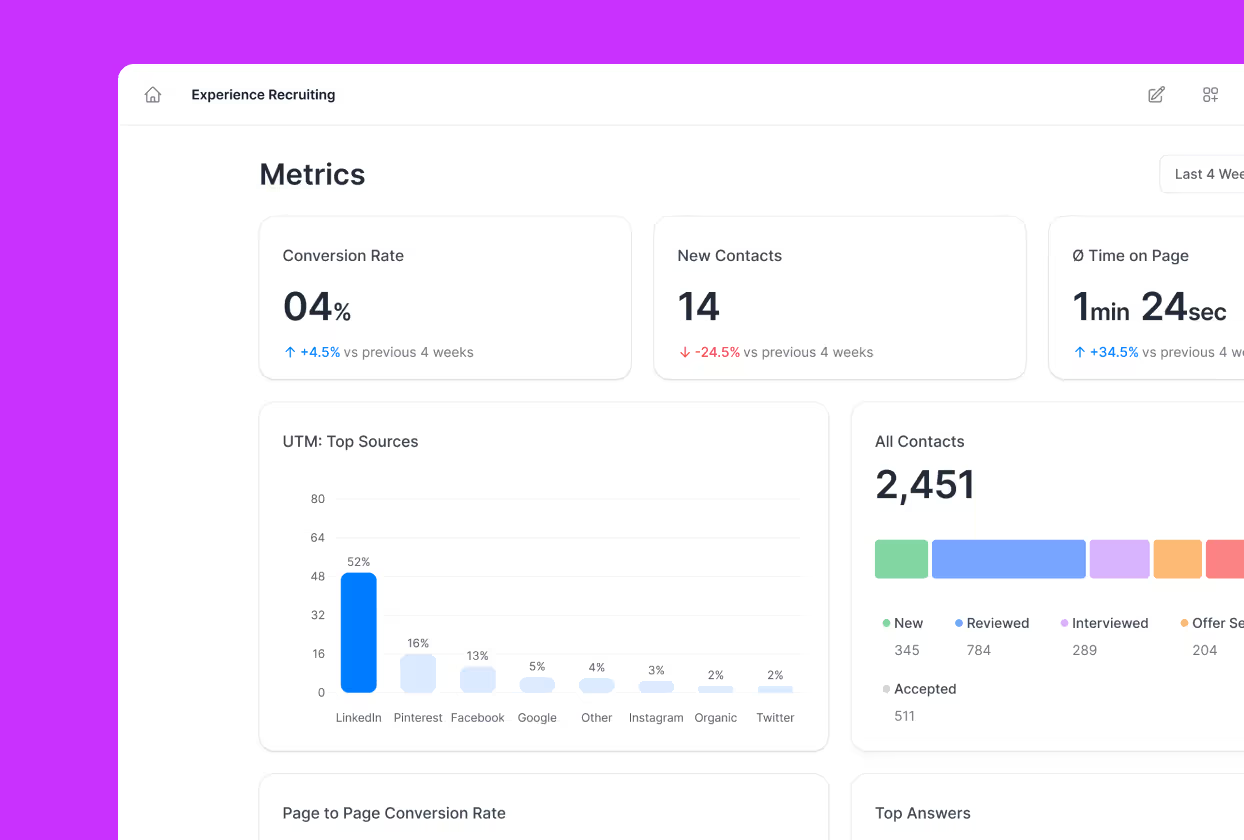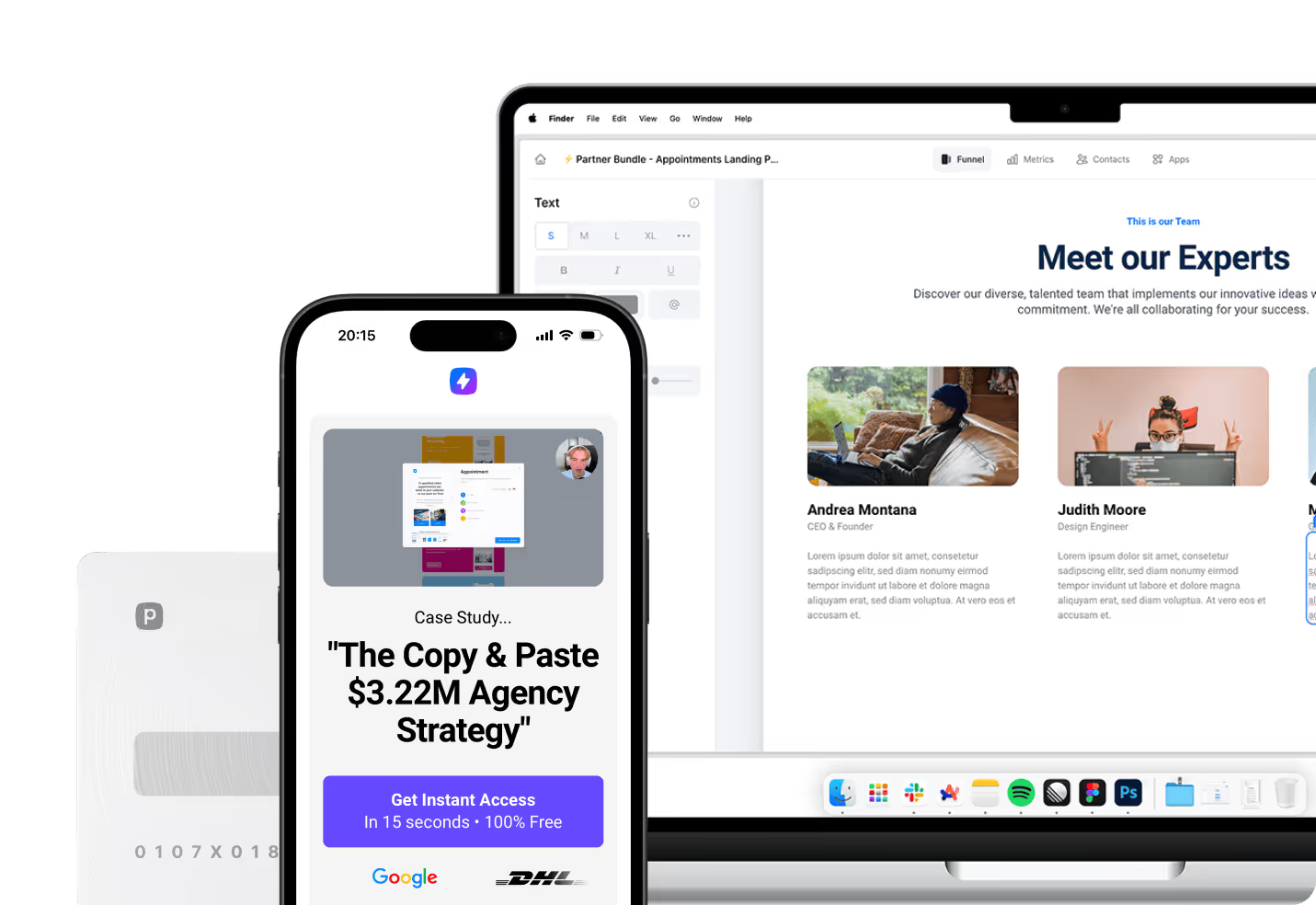Digital marketers today face an overwhelming array of tool options, with new platforms launching weekly and established solutions constantly adding features. The pressure to choose the right technology stack has never been higher, especially as businesses compete for attention in an increasingly crowded online marketplace. Two platforms have consistently risen to the top of marketing discussions: SamCart and Instapage, each designed to solve specific conversion challenges that can significantly impact your bottom line.
What Makes SamCart and Instapage Different
SamCart operates as a specialized checkout optimization platform designed to transform browsers into buyers at the critical point of purchase. The platform focuses exclusively on creating high-converting checkout experiences that reduce cart abandonment and increase average order values through strategic upsells and order bumps. Business owners who struggle with customers leaving at the final step of their purchase journey find SamCart’s targeted approach particularly valuable for recovering lost revenue.
Instapage takes a completely different approach by specializing in landing page creation and optimization for advertising campaigns. The platform excels at creating personalized post-click experiences that align perfectly with your ad messaging, ensuring visitors see exactly what they expect after clicking through from your advertisements. Marketing teams investing heavily in paid advertising campaigns rely on Instapage to bridge the gap between ad click and conversion with precision-crafted landing pages.
SamCart’s Checkout Optimization Focus
SamCart’s strength lies in its laser focus on the final moments of the customer journey where purchasing decisions are made or abandoned. The platform provides merchants with sophisticated tools to create checkout pages that feel natural and trustworthy while strategically presenting additional offers that increase transaction values. Advanced A/B testing capabilities allow businesses to experiment with different checkout layouts, payment options, and upsell sequences to identify the most profitable combinations.
The platform’s analytics dashboard provides real-time insights into checkout performance, helping business owners identify exactly where customers drop off and why. This data-driven approach enables continuous optimization of the checkout process, often resulting in significant improvements in conversion rates and revenue per visitor. SamCart’s webhook functionality also ensures seamless integration with existing business systems, maintaining data consistency across all customer touchpoints.
Instapage’s Landing Page Mastery
Instapage distinguishes itself through its comprehensive landing page creation ecosystem that goes far beyond basic page building. The platform’s drag-and-drop editor provides pixel-perfect control over page elements while maintaining fast loading speeds through technologies like AMP and the Thor Render Engine. Marketing professionals appreciate the platform’s ability to create multiple page variations for different audience segments without requiring technical expertise.
The platform’s collaboration features streamline the approval process for marketing teams by allowing stakeholders to provide feedback directly on landing pages through comment threads. This functionality eliminates the back-and-forth emails and confusion that often plague marketing projects, enabling faster campaign launches and more efficient team workflows. Instapage’s AdMap feature further enhances campaign effectiveness by visually connecting specific advertisements to their corresponding landing pages, ensuring message consistency throughout the customer journey.
Choose Perspective Funnels for Mobile Conversions
While SamCart and Instapage excel in their respective specializations, Perspective Funnels emerges as a compelling alternative that addresses the modern reality of mobile-dominant traffic. Unlike traditional platforms that adapt desktop designs for mobile use, Perspective was built from the ground up with a mobile-first philosophy, recognizing that 98.5% of customers now interact with content on their phones. The platform combines lightning-fast loading speeds with interactive design elements that mirror the social media experiences users expect, creating funnel builder experiences that feel native to mobile behavior rather than forced adaptations of desktop layouts.
What sets Perspective apart is its seamless integration of essential marketing tools within a single, intuitive platform. The software includes built-in CRM functionality, comprehensive analytics, and advanced personalization features that allow marketers to create customized visitor journeys without juggling multiple tools. This unified approach particularly benefits creators, agencies, and mobile-focused marketers who need to launch high-converting funnels quickly while maintaining the flexibility to optimize performance through real-time insights. Perspective's balance of simplicity and customization effectively bridges the gap between SamCart's checkout focus and Instapage's landing page complexity, offering a streamlined solution for businesses that prioritize mobile conversion optimization above all else.
Which Platform Fits Your Business Model
Choosing between SamCart and Instapage requires honest assessment of where your biggest conversion challenges exist and what type of business model you operate. Each platform excels in specific scenarios that align with different marketing strategies and business objectives.
SamCart delivers exceptional value for businesses selling digital products, services, or subscription offerings where the checkout process significantly impacts revenue. Online course creators benefit from the platform’s one-click upsell capabilities, which can dramatically increase student enrollment in additional programs without creating friction in the purchase process. Service-based businesses offering high-ticket consulting or coaching packages find SamCart’s flexible payment plan options essential for converting prospects who need financing options to complete their purchase.
The platform particularly shines for solo entrepreneurs and small teams who need straightforward solutions for selling online without complex technical requirements. E-commerce businesses with focused product lines that have natural upsell opportunities see substantial improvements in average order values when implementing SamCart’s strategic offer presentation tools. However, businesses with large product catalogs or complex inventory management needs might find the platform’s checkout-focused approach limiting compared to full e-commerce solutions.
SamCart’s Ideal User Profile
Businesses that benefit most from SamCart share common characteristics that align with the platform’s specialized functionality:
- Digital product sellers: Course creators, software developers, and content producers who need optimized checkout flows for intangible goods
- Subscription businesses: Membership sites, SaaS companies, and recurring service providers requiring sophisticated billing management
- High-ticket service providers: Coaches, consultants, and agencies selling expensive services that benefit from flexible payment options
- Upsell-focused merchants: Businesses with complementary products or services that can increase transaction values through strategic additional offers
Instapage’s Target Market
Instapage serves businesses with specific advertising and lead generation needs that require sophisticated landing page capabilities:
- Advertising-heavy businesses: Companies spending significant budgets on Google, Facebook, or LinkedIn ads who need to maximize return on ad spend
- Marketing agencies: Teams managing multiple client campaigns requiring personalized landing pages and streamlined collaboration workflows
- SaaS companies: Software businesses needing tailored product demos and sign-up pages for different user segments
- Lead generation specialists: Businesses focused on capturing and nurturing prospects through optimized form experiences and targeted messaging
How Each Platform Handles User Experience
User experience design philosophy differs dramatically between SamCart and Instapage, reflecting their distinct purposes and target audiences. Both platforms prioritize ease of use but approach interface design from different angles based on their core functionalities.
SamCart emphasizes simplicity and efficiency in its interface design, recognizing that merchants need quick access to essential functions without unnecessary complexity. The platform’s recently updated Product Library replaces traditional list views with a visually appealing catalog interface that makes product management more intuitive. Users can publish products with single clicks, access conversion statistics instantly, and make rapid edits without navigating through multiple menu layers.
The streamlined dashboard prioritizes actionable information over aesthetic appeal, ensuring that important metrics and functions remain easily accessible. This approach particularly benefits busy entrepreneurs who need to manage their online sales efficiently without spending excessive time learning complex software interfaces. SamCart’s design philosophy recognizes that checkout optimization requires focus on functionality rather than elaborate visual elements that might distract from the core purchasing process.
Instapage’s Design-Centric Approach
Instapage takes a more sophisticated approach to user interface design, providing extensive creative control while maintaining accessibility for users without technical backgrounds. The platform’s drag-and-drop editor allows for precise positioning of page elements, giving marketers complete freedom to create visually stunning landing pages that align with their brand aesthetics. Advanced users appreciate the pixel-perfect control, while beginners benefit from the extensive template library that provides professional starting points.
The platform’s collaboration features integrate seamlessly into the design workflow, enabling team members to provide feedback directly on page elements through visual comment systems. This approach eliminates the confusion often associated with traditional feedback methods and accelerates the approval process for marketing campaigns. Instapage’s four-step workflow guides users through account creation, page building, review processes, and publishing with clear visual indicators of progress and next steps.
Integration Capabilities That Matter
Modern marketing success depends heavily on how well different tools work together to create seamless customer experiences and efficient workflows. Both SamCart and Instapage recognize this reality and provide extensive integration options, though their focus areas reflect their specialized purposes.
SamCart offers connections with over 750 popular marketing and business tools, creating a versatile ecosystem that adapts to virtually any existing technology stack. The platform’s payment processing flexibility stands out with native support for multiple gateways including Stripe, PayPal, and various credit card processors, ensuring businesses can accept payments through their preferred methods. Email marketing integrations with providers like AWeber, MailChimp, and ActiveCampaign enable automated customer communication sequences that nurture relationships beyond the initial purchase.
Membership site integrations with platforms like Kajabi and Teachable make SamCart particularly valuable for digital product creators who need seamless content delivery after purchase. The platform’s webhook functionality enables custom connections with virtually any API-enabled service, providing flexibility for businesses with unique integration requirements. This comprehensive connectivity ensures that customer data flows smoothly between systems, creating cohesive experiences for both business owners and their customers.
Instapage’s Advertising-Focused Integrations
Instapage’s integration strategy centers on advertising platforms, CRMs, email marketing solutions, and analytics tools that support comprehensive campaign management. The platform’s deep connections with Google Ads, Facebook, and other advertising channels enable precise tracking of campaign performance and help optimize ad spend through detailed conversion data. These integrations provide marketers with the insights needed to make data-driven decisions about budget allocation and campaign optimization.
The platform’s AdMap feature leverages these integrations to create visual connections between specific advertisements and their corresponding landing pages, ensuring message consistency and improving quality scores. Analytics integrations with Google Analytics, Segment, and other tools provide comprehensive insights into visitor behavior that extend beyond basic conversion tracking. Instapage’s robust API also supports custom integrations when standard connections don’t meet specific business requirements, providing flexibility for enterprise-level implementations.
Analytics and Performance Optimization
Data-driven decision making separates successful digital marketing campaigns from those that waste budget and opportunity. Both platforms provide analytics capabilities, but their approaches reflect their different optimization focuses and target audiences.
SamCart’s analytics concentrate specifically on checkout performance and revenue generation metrics that directly impact business profitability. The platform provides real-time conversion statistics that allow merchants to identify and address checkout issues immediately, preventing revenue loss from technical problems or user experience friction. A/B testing capabilities enable experimentation with different checkout layouts, pricing structures, and upsell sequences to continuously improve conversion rates and average order values.
The analytics dashboard presents key performance indicators in an easily digestible format that doesn’t require advanced data analysis skills to interpret. Metrics like average order value, refund rates, and subscription retention provide valuable insights for business growth planning and customer lifetime value optimization. This simplified approach to analytics particularly benefits small business owners who need actionable insights without the complexity of enterprise-level reporting systems.
Instapage’s Comprehensive Visitor Journey Tracking
Instapage provides more comprehensive analytics that track the entire visitor journey from advertisement click to final conversion. The platform’s heatmap functionality offers visual representations of user behavior, showing exactly where visitors click, how far they scroll, and which page elements attract the most attention. This detailed behavioral data helps marketers optimize page layouts for maximum engagement and identify potential friction points that prevent conversions.
A/B testing capabilities allow for testing different page variations with statistical significance, while AI-assisted experiments offer intelligent recommendations for improvement based on performance data. Audience-level metrics enable marketers to understand how different segments respond to landing pages, facilitating more targeted messaging and improved campaign performance. This comprehensive approach to analytics makes Instapage particularly valuable for businesses investing heavily in paid advertising campaigns who need detailed insights to optimize their return on ad spend.
Pricing Strategies and Value Propositions
Investment decisions for marketing tools require careful consideration of both upfront costs and potential return on investment. SamCart and Instapage employ different pricing strategies that reflect their target markets and value propositions.
SamCart offers three clearly defined pricing tiers designed to accommodate businesses at different growth stages. The Launch plan starts at $59 monthly ($49 with annual billing) and includes basic checkout functionality with SamCart branding, making it accessible for new businesses testing the platform’s effectiveness. The Grow plan at $119 monthly ($99 annually) adds white-labeling, A/B testing, and advanced features like upsells and subscription management that growing businesses need to scale their operations.
The Scale plan at $299 monthly ($199 with annual billing) provides all features plus priority support and additional admin users for larger operations. Each pricing tier includes essential features like customizable checkout pages, multiple payment options, and digital product delivery capabilities. SamCart’s value proposition centers on increasing revenue through optimized checkout experiences, with many users reporting conversion rate improvements of 30% or higher after implementation.
Instapage’s Premium Positioning
Instapage positions itself as a premium solution with pricing that reflects its advanced capabilities and target market of advertising-focused businesses. While specific pricing requires consultation, industry sources indicate plans start around $199 monthly with annual billing, representing a significant investment that must be justified through improved advertising performance. The platform’s value proposition centers on improving return on ad spend through better post-click experiences and personalized landing pages.
Companies using Instapage often report significant improvements in ad relevance scores, conversion rates, and overall campaign ROI that justify the premium pricing. The platform’s 14-day free trial allows marketers to explore features and measure potential impact before committing to the investment. For businesses spending substantial budgets on digital advertising, the potential improvements in campaign effectiveness can easily offset the platform’s cost through increased conversion rates and reduced cost per acquisition.
Best Practices for Platform Selection
Selecting the right platform requires systematic evaluation of your business needs, current challenges, and growth objectives. Consider these essential factors when making your decision:
- Assess your primary conversion bottleneck by analyzing where most potential customers drop off in your current funnel, whether at the landing page stage or during checkout.
- Evaluate your advertising spend and strategy to determine if you need sophisticated landing page capabilities or if checkout optimization would provide greater impact.
- Consider your team’s technical expertise and collaboration needs, as Instapage requires more design skills while SamCart focuses on straightforward functionality.
- Review your existing technology stack and integration requirements to ensure your chosen platform connects seamlessly with current tools and workflows.
- Calculate potential return on investment by estimating how much additional revenue each platform could generate based on your current traffic and conversion rates.
- Test both platforms during their free trial periods to experience the user interface and evaluate which aligns better with your team’s workflow preferences.
Key Features That Drive Success
Understanding the specific features that contribute to each platform’s effectiveness helps clarify which solution aligns with your business priorities. Both platforms offer unique capabilities that address different aspects of the conversion optimization challenge.
SamCart’s standout features focus on maximizing revenue from existing traffic through strategic checkout optimization:
- One-click upsells and order bumps: Increase average order value by presenting relevant additional offers during the checkout process
- Subscription management tools: Handle recurring billing, payment failures, and customer retention with automated systems
- Advanced A/B testing: Experiment with different checkout layouts, pricing displays, and offer sequences to identify optimal combinations
- Real-time analytics: Monitor checkout performance instantly to identify and resolve conversion issues before they impact revenue
Instapage’s feature set emphasizes creating personalized experiences that improve advertising campaign effectiveness:
- Dynamic text replacement: Automatically customize page content based on visitor search terms or ad clicks for improved message matching
- Collaboration workflows: Enable team members to provide feedback directly on landing pages through integrated comment systems
- AdMap technology: Visually connect specific advertisements to corresponding landing pages for consistent messaging across campaigns
- Heatmap analytics: Understand visitor behavior patterns through visual representations of clicks, scrolls, and engagement hotspots
Why Your Business Needs the Right Tool Now
Smart platform selection can dramatically accelerate your business growth by addressing the specific conversion challenges that limit your current performance. Businesses that choose tools aligned with their primary optimization needs see faster results and better return on investment than those using generic solutions.
SamCart excels for businesses where checkout optimization represents the biggest opportunity for revenue growth, particularly those selling digital products or services with natural upsell potential. The platform’s specialized focus on the final stage of the customer journey makes it ideal for companies that already generate sufficient traffic but struggle with cart abandonment or low average order values. Instapage delivers exceptional value for advertising-heavy businesses that need to maximize return on ad spend through personalized post-click experiences and sophisticated landing page optimization.
Many successful businesses eventually implement both platforms as complementary solutions within their marketing ecosystem, using Instapage to optimize initial conversions from advertising traffic and SamCart to maximize revenue during the checkout process. This integrated approach addresses optimization opportunities throughout the entire customer journey, from first click to final purchase. The key is starting with the platform that addresses your most critical current challenge while planning for future expansion as your business grows and your optimization needs evolve.
For mobile-driven marketers seeking speed, personalization, and performance in today’s mobile-first landscape, Perspective Funnels represents a smart strategic choice that eliminates the complexity of managing multiple tools while delivering the conversion optimization capabilities modern campaigns demand. The platform’s mobile-native approach and integrated feature set make it particularly valuable for businesses that recognize mobile traffic as their primary conversion opportunity rather than a secondary consideration.


















